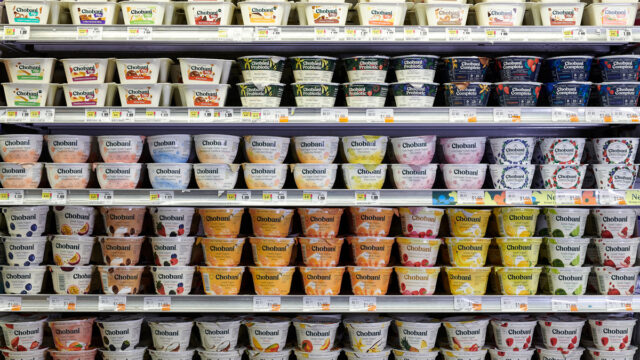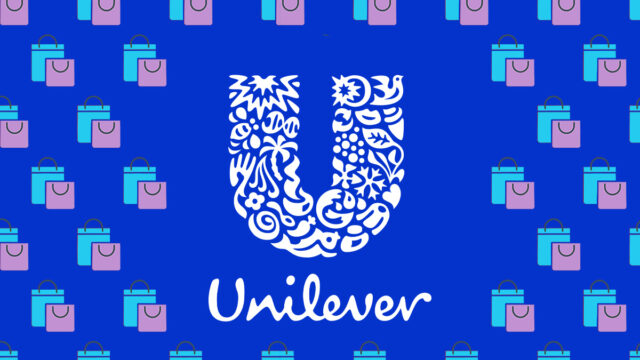Unilever Brings Back the CMO Role—Here’s Why
It’s no secret that collaboration is essential to growth, but the how of it isn’t always so clear—and it’s the understanding of how that is a true competitive advantage. Join Adweek X, a uniquely formatted event on December 4 in LA, to unlock fresh perspectives, true collaboration and growth.
Just over one year ago, Unilever switched out the traditional CMO role for a marketing position that bridged sales and digital. Now the CPG giant, famously one of the world’s biggest advertisers, has reinstated the role. Well, almost.
On Thursday, the Dove and Ben & Jerry’s owner announced that Esi Eggleston Bracey, who currently leads its U.S. business and oversees the personal care division across North America, is set to take on the new position of chief growth and marketing officer.
Sources with knowledge of the matter told Adweek the decision had been made as the business looked to a new era of marketing and creative excellence, creator-generated content, digital growth, AI and performance marketing.
Bracey, previously honored by Adweek as a champion of diversity and inclusion, will now control a marketing budget estimated to be worth $8.3 billion.
Her promotion follows the departure of Unilever’s top marketer, Conny Braams, in August.
Though Braams was originally named Unilever’s chief marketing and digital officer (CMDO) in 2019, her title was updated to chief digital and commercial officer (CDCO) in 2022 to reflect the “blurring lines” between digital marketing and commerce.
“We can now build brands and convert sales at the same time, so why would [we] artificially split that?” Braams told Adweek at the time.
Bracey’s appointment was announced as part of a wide-ranging executive leadership update from CEO Hein Schumacher, who joined in July 2023 from European dairy outfit Royal FrieslandCampina.
Dan Rookwood, operating partner at growth capital firm VGC Partners, said the decision to not only reinstate the CMO role, but modify it, sends a powerful message.
“It’s about clearly linking marketing back to growth. And it’s about underlining the clear business value of building strong brands for the long term,” he said.
“This move will no doubt please Unilever investors. But it should also be seen by all as a powerful endorsement of the value and importance of marketing at a time when marketing budgets are under ever-growing pressure from chief financial officers hungry for cost-cutting and spending only on marketing activity with an immediate return.”
A CMO reprisal
With this announcement, Unilever’s consumer business is putting marketing front and center again, reinstating the chief marketer role with an added growth remit.
It’s understood the CGMO role will no longer comprise customer development. However, Bracey will keep one foot in ecommerce and content through her leadership of Unilever’s network of 29 digital marketing, media and commerce hubs, which pool together talent from across the business to deliver “seamless consumer experiences” across platforms.
With more than three decades in the marketing and advertising industry under her belt, Bracey kicked off her career at Procter & Gamble where she stayed for 25 years, rising up the ranks to lead a host of personal and beauty brands including CoverGirl before eventually being appointed svp and general manager for global cosmetics.
She joined Unilever in 2018. In her role overseeing personal care, she has pioneered Unilever’s purpose-driven approach to marketing, which became the company’s north star under the influence of former CEO Alan Jope. This mean brands including Dove, Hellmann’s and Persil heavily amplified their positive social and environmental impacts through initiatives including the campaign for “Real Beauty” and “Dirt Is Good.”
Bracey spearheaded Dove’s efforts to back the Crown Act, a proposed federal ban on discrimination against people in the workplace based on their hairstyle or texture, which was passed by the House of Representatives last year and put into legislation in several U.S. states.
Changing of the guard
In the three months since he started as CEO, Schumacher has already made several changes at the top of Unilever.
These include the appointment of a new chief financial officer in Fernando Fernandez (currently president of Unilever’s beauty and wellbeing arm), as well as a suite of internal presidential promotions across Unilever’s five core business groups.
Schumacher told investors in the statement announcing these hires that his intention was to drive a “performance culture” at Unilever, with “a renewed team leading the change.”
Predecessor Jope, who made it his mission to assign a purpose to every brand within Unilever’s 400-strong portfolio, drew criticism from investors for a perceived failure to focus on growth. Fundsmith’s Terry Smith was among the most vocal of the company’s detractors, accusing Unilever of “virtue signaling” and having an “obsession” with purpose.
While Unilever has taken some criticism for being focused on brand purpose over commercial performance, there’s plenty of evidence to show its initiatives in ethical sourcing and manufacturing, distribution and positioning have been commercially effective, noted James Murphy, founder and CEO at London-based independent ad agency New Commercial Arts.
This includes Unilever’s own evidence that high-purpose brands deliver greater sales growth.
“The announcement of a growth and marketing role is a sign of climate change within the organization and a focus on building commercial value,” said Murphy.
“In large [corporations] with multiple brands working across different sectors, it’s easy for marketing to become an academic and slightly removed function. The business and its brand can have such scale and momentum that marketeers stop feeling the immediate commercial imperative and become distracted by more theoretical measures and initiatives. This new appointment signals a clear focus on performance and delivery.”
https://www.adweek.com/brand-marketing/unilever-brings-back-cmo-brand-purpose-commercial-growth-analysis/

